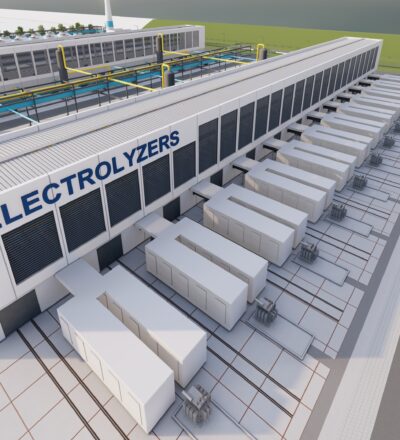Since the “War of the Currents” at the end of the 19th century, the electricity grid and electrical devices and machines have predominantly been based around Alternating Current (AC) technology. However, water electrolysis, the electrochemical process of splitting water into hydrogen and oxygen, requires Direct Current (DC) at low voltage. The common way is to supply renewable electricity for production of green hydrogen through an AC grid connection converting DC to AC and AC back to DC. It is therefore of interest to consider more optimised DC-DC connections for large scale green hydrogen plants. But what are the potential benefits, costs and constraints of implementing DC-DC converters for large-scale green hydrogen production?
To investigate these questions the Institute for Sustainable Process Technology (ISPT) together with consortium partners Equinor, Hitachi Energy, HyCC, Ørsted, Port of Rotterdam and Yara have started a new DC-DC project.
Benefits, costs and constraints of DC-DC converters
The DC-DC project is a follow-up of the Hydrohub GigaWatt Scale Electrolyser project, which delivered an advanced 2030 design for a 1 GW green hydrogen plant. Now, the consortium partners will investigate the feasibility of connecting (HV)DC infrastructure to this future (virtual) GW green hydrogen plant, improving the traditional step from (HV) AC to DC feeding electrolysers. This takes its full sense considering recent and upcoming developments of High Voltage (HV) DC transmission lines connecting offshore wind farms to power grids.
Through a thorough electrical study, the partners want to determine the potential benefits, costs and constraints of implementing DC-DC converters for large-scale green hydrogen production. Specifically, this feasibility study will focus on technical and economical evaluations of DC-DC technological solutions, including safety, efficiency gain, space requirements, integration with electrolysers, and overall costs. The project will run until April 2024.
